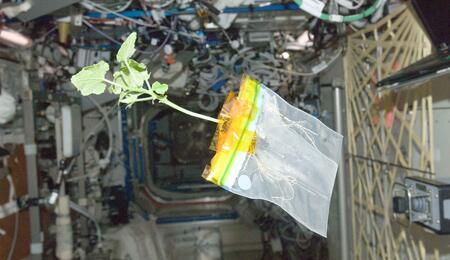Why Farming Cannabis on Mars Will Fail?

Sci-fi depictions of farming plants on Mars are abundant. The shared vision is that vegetation thrives in greenhouses in striking contrast with the red planet's dusty, desolate surface. Space farming envisions how we take agriculture in outer space, and if humanity is serious about colonizing other planets, taking seeds from our home planet is essential. But there's nothing simple about conducting these types of civilization-scale endeavors.
Well, it's not like marijuana is going to make a top priority crop to cultivate one day on Mars or any other futuristically-conceived colony away from Earth. Perhaps hemp as a resource for textiles and ropes has better chances.
First and foremost, a colony outside Earth will require enormous quantities of food to sustain and replenish the people who will settle on the mission. Supplying edible foods from Earth may work as a one-time or two-time effort, but anything more than that sounds expensive, dangerous, and unsustainable. A futuristic colony has to be self-sufficient, and this vision includes food production, for which you need to cultivate various crops.
One of the most convenient solutions space scientists consider is designing a unique greenhouse where plants can grow. Even with a greenhouse, both fertile soil and water may be scarce commodities. But let's say that part is managed. There's one other issue that could well threaten any farming effort in a Martian greenhouse, and that's cosmic radiation.
Earth's plants don't react well when exposed to the level of radiation expected on Mars, a recent study has shown. While radiation does not necessarily affect seedlings and germination, it does impact the plant's biomass. Leaf abnormalities and necrosis were also observed in the experiment, which focused on cultivating two different classes of plants: rye and garden cress.
Wieger Wamelink, an ecologist at Wageningen University in the Netherlands and a self-proclaimed space farmer, tested with his team the hypothesis if cosmic radiation could be calamitous to plants. The results of this research were issued in the journal Frontiers in Astronomy and Space Sciences on 2 August 2021.
Cosmic radiation consists of high-energy particles capable of altering the plants' DNA. Earth's atmosphere and its magnetic field are what shields life on our planet from cosmic radiation, but the red planet does not have the same degree of protection.
The occurrence of highly energetic solar flares can additionally increase cosmic radiation levels, sometimes by as much as 50%. This may affect crop growth in greenhouses on the surface of Mars, potentially threatening permanent human settlement.

Wamelink and his team artificially recreated radiation using gamma rays generated by radioactive cobalt. The scientists grew rye and cress in two groups: one with standard growing conditions and the other with the same conditions but added gamma radiation.
The team compared the progress of the control group of plants and the ones showered with radiation. Four weeks after germination, the leaves of the plants exposed to gamma rays had abnormal coloring of leaves, brown chunks, and dead tissue. The gamma-exposed ray crops weighed 48% less than the control crops. Radiation also reduced the weight of cress growth by 32%. According to Wamelink, the weight difference may owe to the gamma rays damaging the plant's proteins and DNA.
While the research replicated cosmic radiation, it didn't completely mimic Mars's environment. Gamma rays are just one type of radiation that heats the red planet's surface. Scientists still need to do more research to get a comprehensive picture of the full impact of cosmic radiation.
Lighting efficiency can help in shielding crops from radioactive frying. Optimization of natural daylight and LED lights can contribute to energy-efficient cultivation. But whether lighting alone can help prevent radiation from battering the DNA of various crops, this too requires more investigation.
Space agencies from different countries have spent tremendous amounts of time and resources devising technologies to bring farming indoors. NASA and the German space agency are currently testing space agricultural projects in regions like Antarctica, that could potentially support habitats beyond Earth.
There's also other research. An effort from scientists at the University of Georgia has devised a series of artificial soil mixtures imitating the topsoil of the red planet. The synthetic samples were composed of stirring soil, clays, salts, and other components that can be picked on the surface of Mars.
With all the scientific progress left, right and center, is it possible that perhaps, within the next ten years, there appears a breeder who will engineer cannabis strains ultra-resilient to radiation? Could this be a reason persuasive enough to take cannabis into space?



